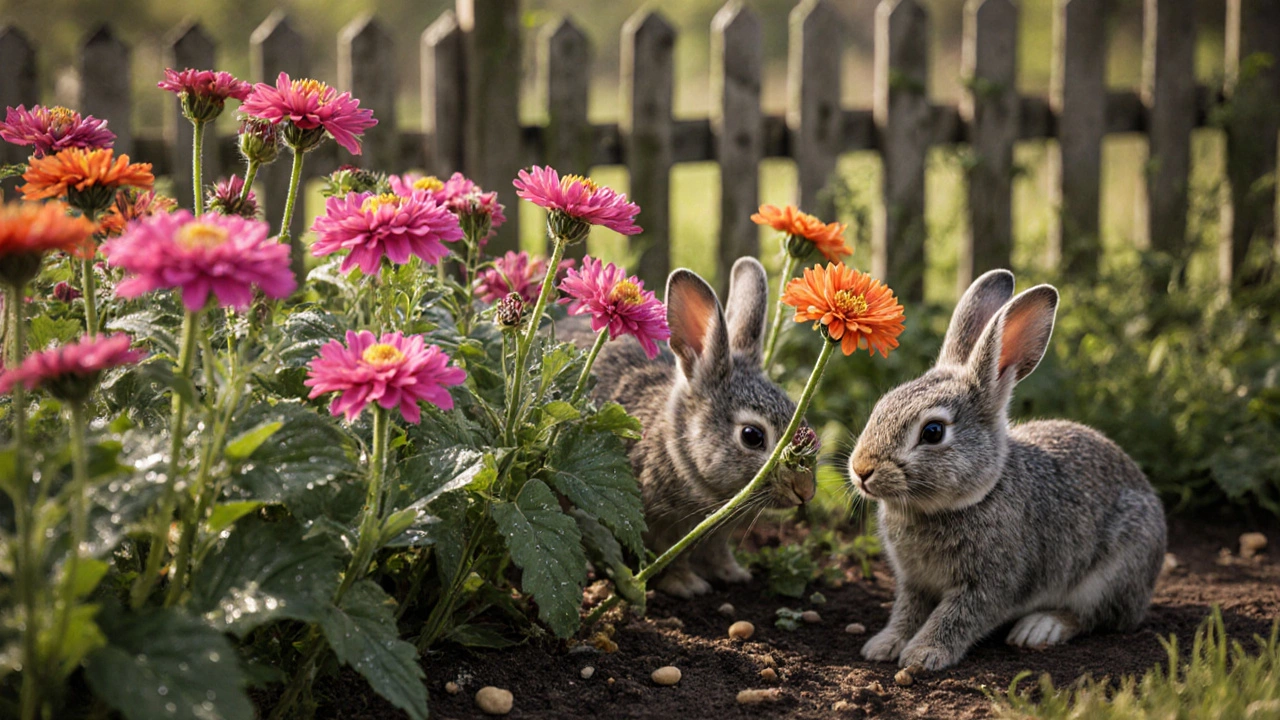Rabbits do eat zinnias, especially in spring and fall. Learn how to protect your kitchen garden flowers with simple, effective strategies - from cages to companion planting - without using harsh chemicals.
Rabbit-Resistant Flowers: Best Plants to Keep Rabbits Away from Your Garden
When you love your garden, seeing rabbits nibble on your favorite blooms isn’t just frustrating—it’s heartbreaking. rabbit-resistant flowers, plants that rabbits naturally avoid due to texture, smell, or taste. Also known as rabbit-proof plants, these are the secret weapon for gardeners who want color without constant replanting. Rabbits don’t eat everything. They have preferences, and smart gardeners use that to their advantage. Instead of fencing off your whole yard or using chemicals, you can choose flowers that rabbits simply walk past.
Many of the best rabbit-resistant flowers share common traits: strong scents like lavender or marigold, fuzzy or prickly leaves like lamb’s ear, or bitter sap like daffodils. These aren’t just guesses—they’re facts backed by years of gardeners in India watching what gets eaten and what doesn’t. Plants like lavender, a fragrant herb that repels rabbits and attracts pollinators, or marigolds, bright, pungent flowers that rabbits avoid, are reliable choices. Even daffodils, toxic bulbs that rabbits refuse to touch, work wonders in winter gardens. You don’t need to plant every flower in your yard as a defense. Just mix a few of these into your existing beds, and rabbits will learn to look elsewhere.
What makes this even better is that many of these plants also thrive in India’s climate. You don’t have to choose between beauty and protection. rabbit-resistant flowers like zinnias, salvia, and snapdragons bloom through heat and monsoons, just like the year-round flowering plants you already know from our guides. They’re low-maintenance, need little water once established, and often double as pollinator magnets. This isn’t about fighting nature—it’s about working with it. If you’ve ever struggled with rabbits eating your pansies or tulips, you know how much energy goes into replanting. With the right plants, that energy goes into enjoying your garden instead.
Below, you’ll find real guides from gardeners who’ve faced the same problem—how to protect their balconies, terraces, and backyard plots without cages or sprays. Some show you exactly which plants to pair together. Others explain how to layer defenses using scent, texture, and timing. No fluff. No magic potions. Just proven, practical choices that work in Indian soil and weather.
